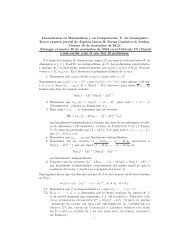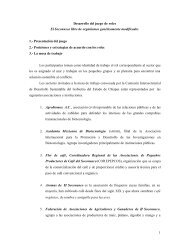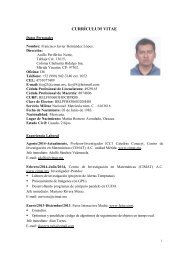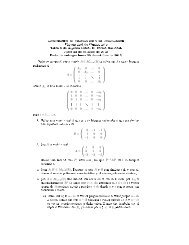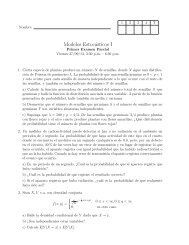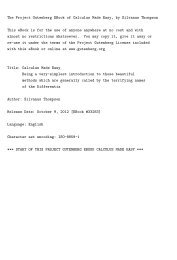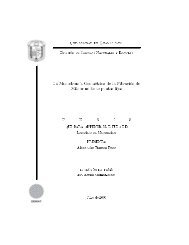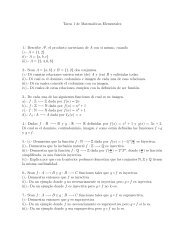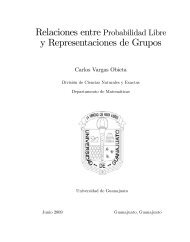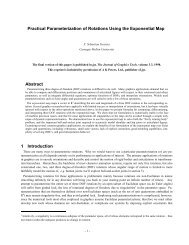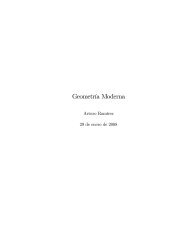S-integral points on hyperelliptic curves Homero Renato Gallegos ...
S-integral points on hyperelliptic curves Homero Renato Gallegos ...
S-integral points on hyperelliptic curves Homero Renato Gallegos ...
- No tags were found...
Create successful ePaper yourself
Turn your PDF publications into a flip-book with our unique Google optimized e-Paper software.
2.1 Basic definiti<strong>on</strong>s and theoremsThe following definiti<strong>on</strong>s and results are standard and are taken from Chapters 1-3 in[16]. Let C be a <strong>hyperelliptic</strong> curve of genus 2 defined over Q given by an affine modelof the formC :Y 2 = f(X),wheref(X) = f 6 X 6 + f 5 X 5 + f 4 X 4 + f 3 X 3 + f 2 X 2 + f 1 X + f 0 ,where the f i s are all integers and f 6 is not zero and f(x) has no multiple factors. Everygenus 2 <strong>hyperelliptic</strong> curve over Q is birati<strong>on</strong>ally equivalent over Q to a curve of thistype, which is unique up to a fracti<strong>on</strong>al linear transformati<strong>on</strong> in X, and an associatedtransformati<strong>on</strong> in Y .When dealing with the degree 6 affine model of a <strong>hyperelliptic</strong> curve <strong>on</strong>e shouldbear in mind that the corresp<strong>on</strong>ding projective model in P 2 has a singularity at infinity.But we think instead <strong>on</strong> a complete n<strong>on</strong>-singular model, either in a weighted projectivespace P X,Y,Z (1, 3, 1) or the model in P 4 resulting from blowing up the singularity atinfinity (see [16, Chapter 1, Secti<strong>on</strong> 1]). This means that as a double cover of P 1 , thecurve C has two <str<strong>on</strong>g>points</str<strong>on</strong>g> over ∞. They are traditi<strong>on</strong>ally named ∞ + and ∞ − , accordingto the sign of Y/X 3 al<strong>on</strong>g the corresp<strong>on</strong>ding branch (see for instance [16, p. 77]). Wewill also c<strong>on</strong>sider affine models given by a degree 5 polynomial f. In this case thereis <strong>on</strong>ly <strong>on</strong>e point over the point at infinity in P 1 which is traditi<strong>on</strong>ally named ∞ as well.Hopefully, in the rest of the work it will be clear from the c<strong>on</strong>text whether we are talkingabout the point ∞ ∈ P 1 or the point ∞ ∈ C.Definiti<strong>on</strong>. The Jacobian of C is defined as J(C) = Pic 0 (C), i.e. degree 0 divisorsmodulo linear equivalence.Let P be a point of C, P = (x, y). We say that the point ¯P = (x, −y) isthe c<strong>on</strong>jugate of P . A divisor of degree 2 of the type P + ¯P is the intersecti<strong>on</strong> of Cwith X = x. We see then that any two divisors of this type are linearly equivalent.8



